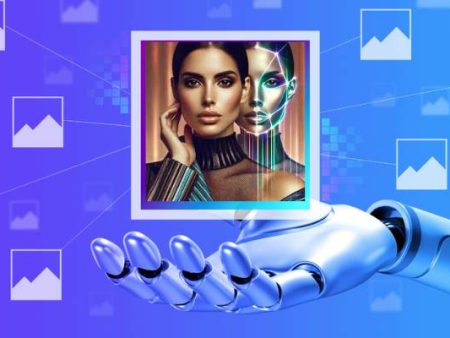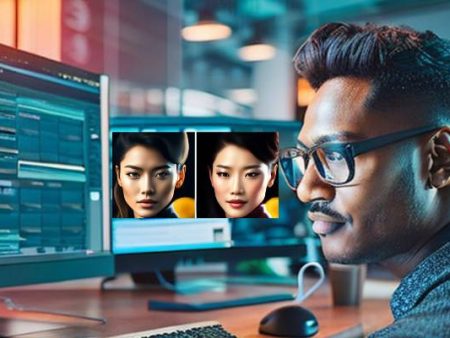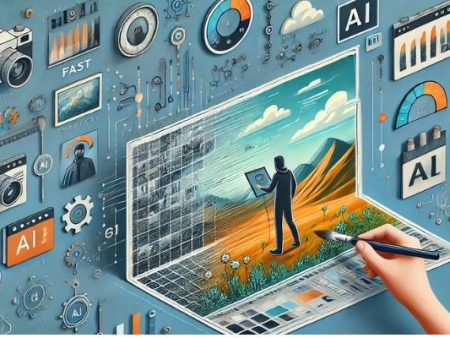It used to be simple: if you needed an image for your article, your business presentation, or your website, you went to a stock photo library.
Whether it was Getty Images, Shutterstock, or iStock, these platforms shaped the visual language of marketing and media for decades.
But today, there’s a shift that no creative professional can ignore. AI image generation is rewriting the rules.
With a few lines of text, you can conjure images that never existed—hyper-realistic portraits, surreal dreamscapes, or custom marketing visuals designed for a niche audience.
So the big question is staring us in the face: AI-generated images vs stock photos: which will dominate?
Let’s unpack it.
Stock Photos: The Old Guard
Stock photos have been around since the 1920s, but it was the digital boom of the late 20th century that really gave them power.
They offered accessibility, affordability, and speed. Instead of hiring a photographer for every project, businesses could license pre-made images.
But stock photos came with their own problems:
- Overuse: We’ve all seen the same smiling call-center woman or the handshake close-up recycled a thousand times.
- Lack of specificity: Need something ultra-niche, like “a yoga class on a rooftop in Cleveland with diverse participants”? Good luck finding that exact image.
- Cost barriers: High-quality, exclusive stock photos could still be expensive for small businesses or freelancers.
For years, though, they were the best option we had.
The AI Disruption
Then came AI. Tools like MidJourney, DALL·E, and Stable Diffusion didn’t just add to the library of visuals—they created entirely new possibilities.
You don’t have to search endlessly anymore. You just type: “A 1960s-style advertisement of a family eating pizza in space” and you’ve got it.
And this is where the debate on the rise of text-to-image takes off. Because AI doesn’t just provide access to pre-existing visuals—it generates infinite options on demand.
How AI Image Generators Could Works
At the heart of the disruption is how AI image generators could works.
These systems are trained on billions of images, learning styles, textures, and forms. When you type a prompt, the AI translates your words into pixels by referencing this vast training data. It doesn’t copy; it reinterprets patterns into something new.
Imagine it like this: stock photos are a library. AI is a painter who has studied every book in that library and can now create something fresh every time you ask.
This means businesses, educators, and artists no longer need to rely on the limitations of stock. They can generate exactly what they need, personalized and unique.
The Economics of Image Supply
One of the biggest reasons AI threatens stock photos is economics.
According to MarketsandMarkets, the AI image generation market is expected to grow from $16.1 billion in 2023 to $63 billion by 2028.
Compare that with the stock photo market, projected to grow much more slowly, reaching about $4.5 billion by 2027 (Grand View Research).
The gap is striking. The numbers suggest that AI isn’t just a trend—it’s the future of the visual economy.
And when cost efficiency comes into play, especially for small businesses, AI wins.
Why pay $100 for a single high-quality stock image when you can generate unlimited unique ones for a subscription fee or even free with open-source tools?
Creative Freedom vs Standardization
Stock photos are standardized—they have to appeal to broad audiences to be profitable. AI images, on the other hand, can be hyper-specific.
- Want a marketing visual of your product being used by left-handed chefs in a futuristic kitchen? AI can do it.
- Need a surreal background for your album cover that blends cubism and cyberpunk? AI delivers.
This freedom changes the game. Stock photos are built on compromise. AI is built on customization.
But with that freedom comes risk. Generated images can look uncanny, biased, or off-kilter. Which raises new questions about quality control.
Issues With for Movies and Games
AI’s reach isn’t limited to business presentations or social media campaigns. The entertainment industry is already testing AI for concept art, storyboarding, and background generation.
But here’s the thorny part: issues with for movies and games are starting to surface.
- Ethical Concerns: Artists worry that their work is being scraped without consent to train AI systems.
- Homogenization: If too many studios rely on the same tools, visual styles could start to look eerily similar.
- Job Displacement: Concept artists and junior designers, once essential to the early phases of game and film development, may find fewer opportunities.
Yet, despite these challenges, the pull of AI is undeniable. It’s cheaper, faster, and flexible. The question is whether industries will balance its use with a commitment to human artistry.
Guide to Are AI-Generated Portraits More…
One fascinating arena where this debate plays out is portraiture. The guide to are AI-generated portraits more captivating than stock or even traditional photos isn’t straightforward.
AI-generated portraits can be flawless—perfect lighting, ideal symmetry, surreal creativity. But sometimes they’re too perfect, missing the small imperfections that give human faces their charm.
Stock portraits, meanwhile, carry the authenticity of real people. That authenticity matters in contexts where trust is key—journalism, healthcare, education. AI images may not yet replace those.
But for advertising? AI’s ability to conjure faces that fit brand demographics without hiring models is incredibly powerful. Some companies are already creating campaigns entirely with AI-generated “models.”
Emotional Weight and Human Connection
Here’s my personal take: stock photos, as generic as they sometimes are, still carry a sense of reality.
They remind us that someone, somewhere, stood in front of a camera that day. There’s a human fingerprint in the lens choice, the lighting, the moment captured.
AI images don’t have that grounding. They’re imagination made visible—but without a lived backstory.
That makes them brilliant for certain uses (ads, design mockups, conceptual art), but less compelling in spaces where the story behind the image matters.
So in terms of emotional weight, stock still has the edge. At least for now.
Trust and Authenticity in the Age of AI
Another factor to consider: trust.
In an era where misinformation spreads fast, AI-generated images raise alarm bells. How do we know what’s real?
When a photo of a politician, a protest, or a natural disaster surfaces online, authenticity is everything.
Stock photos are verifiable—they’re tagged, licensed, and grounded in reality. AI images blur that line.
That doesn’t make them unusable, but it does mean they may be limited in certain professional contexts.
A Coexistence Model
So, will AI wipe out stock photos entirely? I don’t think so. I believe we’ll see coexistence.
- AI dominates commercial and creative niches where customization and speed are king.
- Stock photos remain trusted in journalism, legal, medical, and archival contexts where authenticity matters.
This division of labor feels more realistic than a total takeover.
What This Means for Creatives and Consumers
For creatives, the future means learning to navigate both worlds. Designers and marketers will need to know when to use stock, when to generate, and how to blend both effectively.
For consumers, it means questioning images more than ever before. Is this picture “real,” or is it an invention? That skepticism could reshape how we engage with visual media.
Conclusion: Which Will Dominate?
So back to the question: AI-generated images vs stock photos: which will dominate?
In raw numbers and growth, AI will dominate. Its ability to generate infinite visuals cheaply and instantly is too powerful to ignore.
But in spaces where authenticity, trust, and human fingerprints matter, stock photos will hold their ground.
The future isn’t a battle of replacement. It’s a balance of roles. AI will transform how we create, while stock will remind us of the value of capturing the real.
And perhaps that’s the point: in a world of infinite imagination, the real may become more precious than ever.


